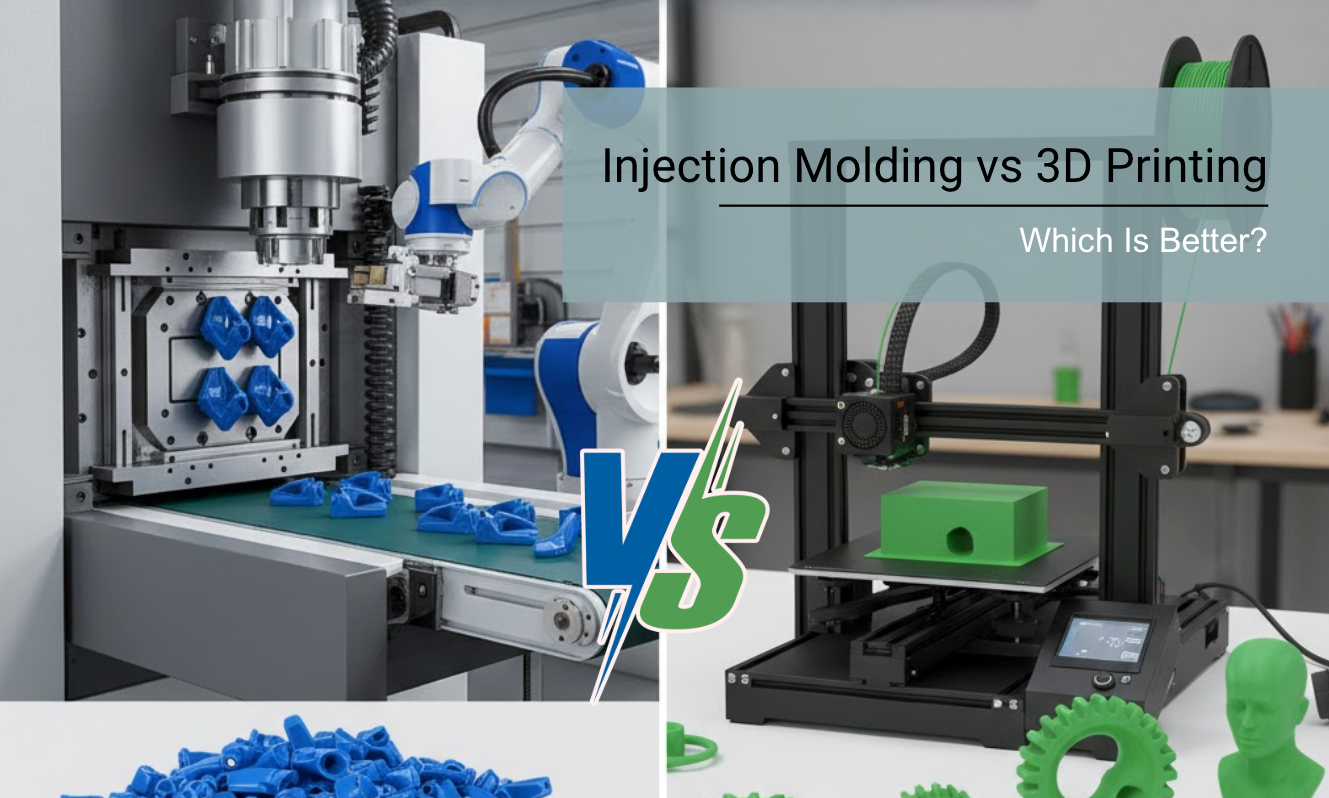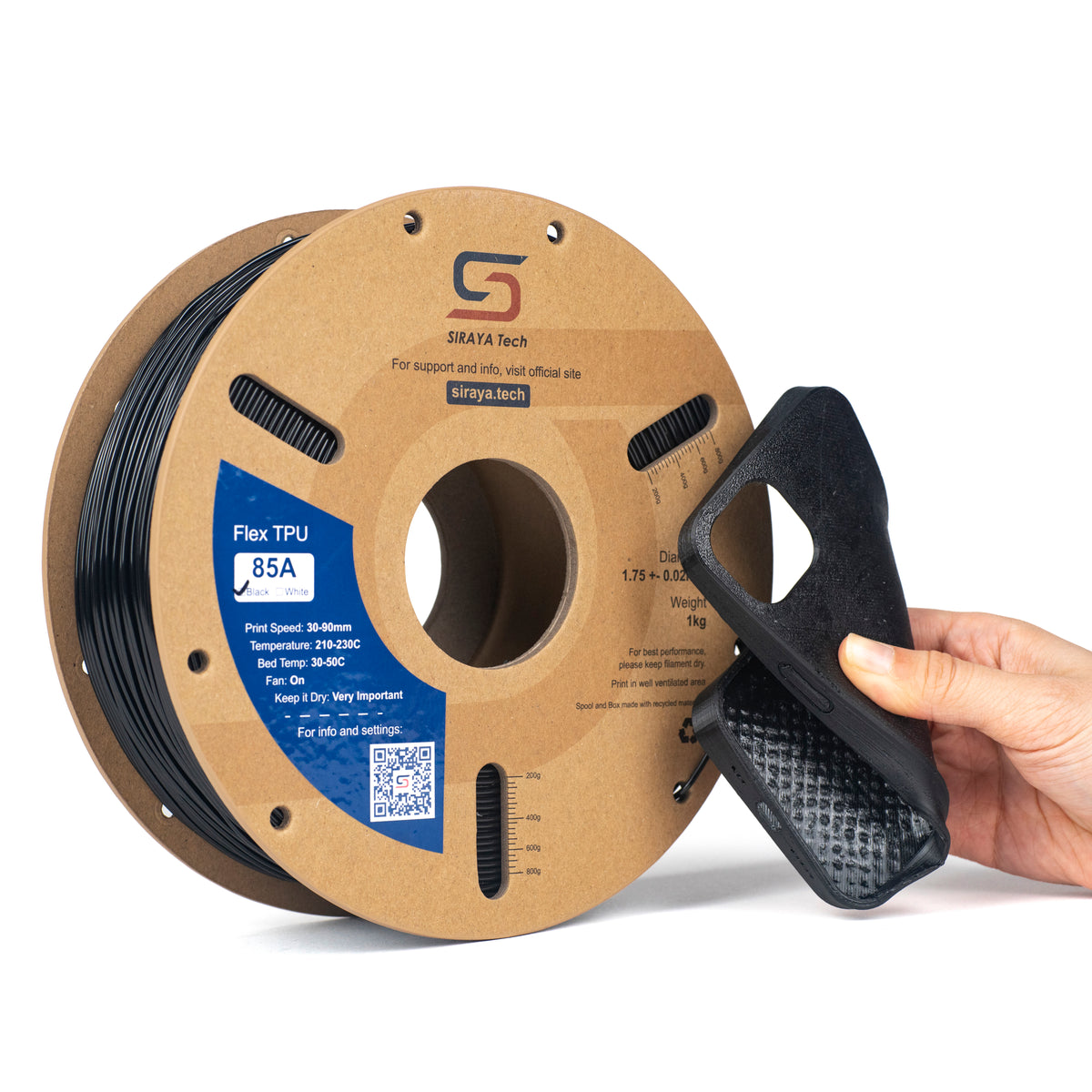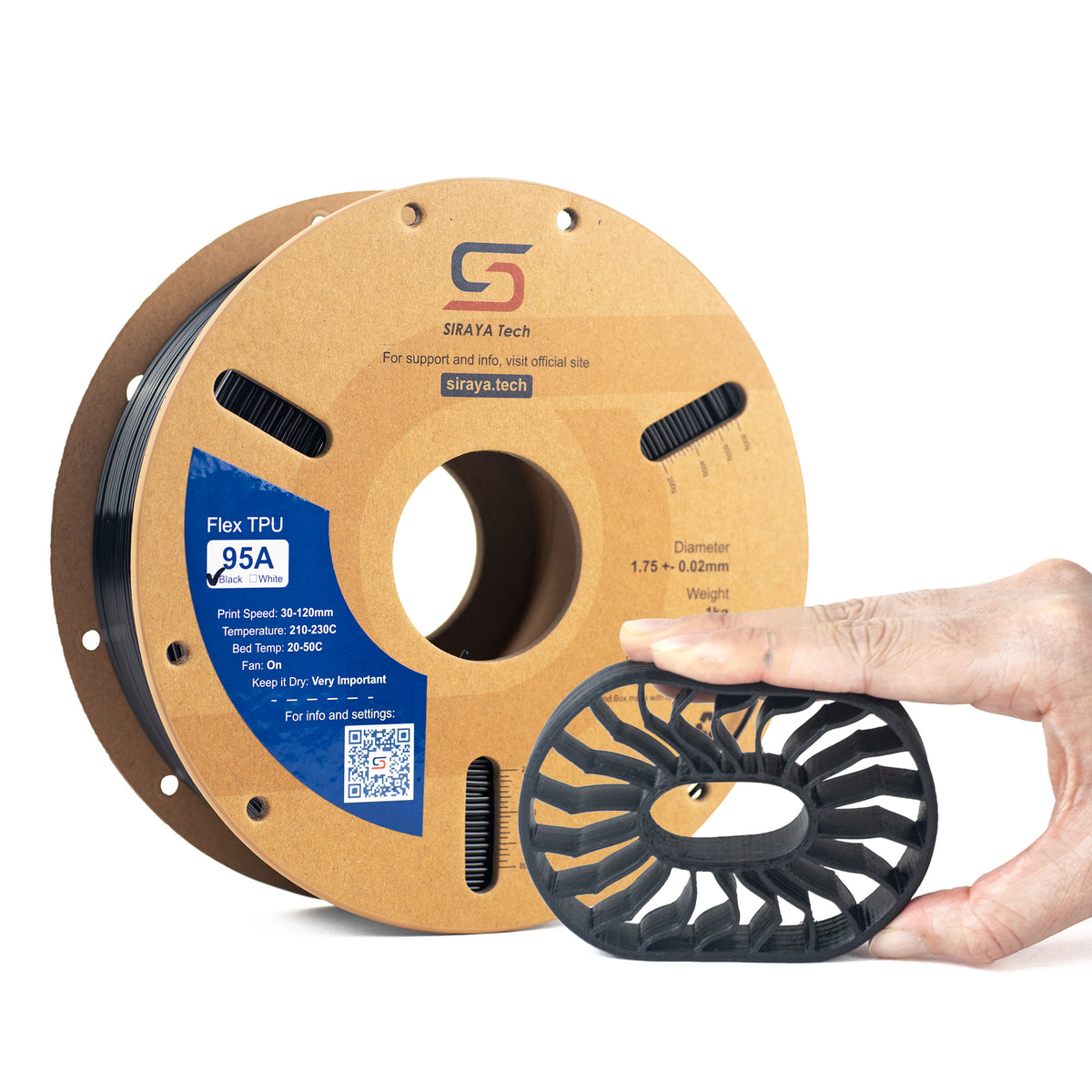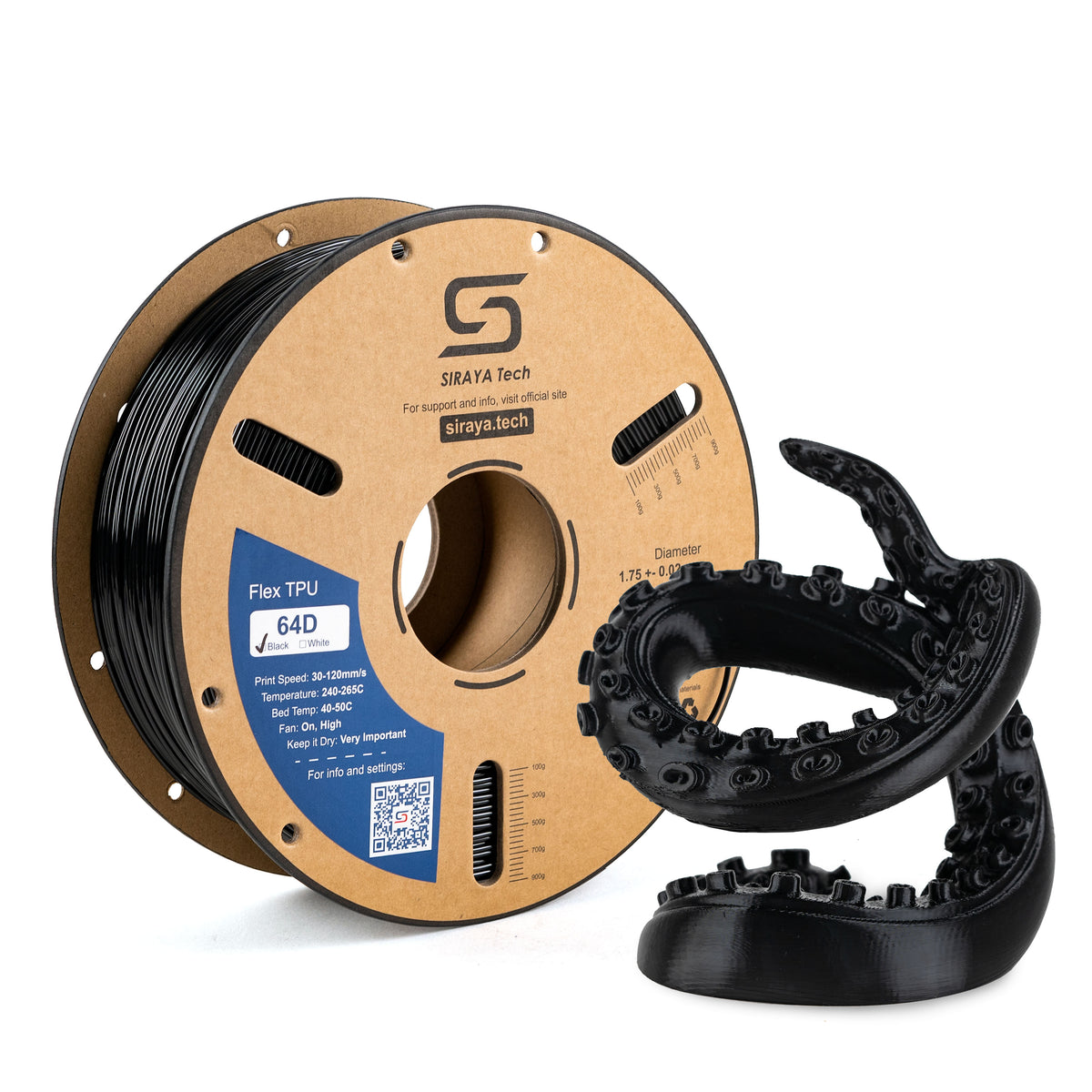Choosing the right manufacturing method can make or break a project. If you’re torn between 3D printing vs injection molding, you’re not alone.
Both methods have their strengths and weaknesses depending on your needs, budget, and timeline.
This article simplifies the process by breaking down how each technology works, its costs, speed, and best use cases, allowing you to select the perfect option for your project.
Quick Takeaways:
- Choose injection molding for thousands of identical parts with the lowest cost per unit and consistent strength.
- Use 3D printing for prototypes, complex geometry, and low volumes where tooling cost would kill your budget.
- Break-even depends on part size and material. Tooling can range from a few thousand to $100k+. Run numbers before committing.
- Printed parts are often weaker than molded parts due to layer lines, although material and process also play a role.
You May want to Shop TPU Filaments
Understanding the Basics of 3D Printing and Injection Molding
Before comparing, it’s important to understand how each process works.
What is 3D Printing?
3D printing, also called additive manufacturing, builds parts layer by layer based on computer models. It utilizes materials such as plastics or metals in various forms, including filament, resin, or powder.
- Prints parts directly from CAD files.
- No molds or tooling needed.
- Excellent for prototypes and customized items.
👉 Also Read: How Does 3D Printing Work? Understanding Methods and Process
What is Injection Molding?
Injection molding is a traditional manufacturing process where molten plastic is injected into a metal mold cavity. The plastic cools and solidifies into the final shape.
- Requires making a custom metal mold.
- Best for mass-producing identical parts.
- Offers high repeatability and strength.
Comparing 3D Printing vs Injection Molding

To know which is better, compare these key factors:
Production Volume
- 3D Printing: Ideal for low-volume runs and one-off projects.
- Injection Molding: Economical for large volumes (hundreds to thousands or more).
Cost
- Injection Molding: High upfront mold cost (often thousands to tens of thousands of dollars). Per-part cost decreases with volume.
- 3D Printing: No tooling cost but higher cost per part, which stays consistent regardless of volume.
Lead Time and Speed
- 3D Printing: Quick prototyping and first parts in days.
- Injection Molding: Mold preparation can take weeks; once ready, parts are produced quickly.
Design Complexity and Flexibility
- 3D Printing: Supports complex geometries, internal features, and customized parts with ease.
- Injection molding requires draft angles for mold release and simpler designs; complex shapes increase mold costs.
Material Options and Part Strength
- Injection Molding: A Wide range of plastics with strong mechanical properties.
- 3D Printing: Increasing variety of materials but generally fewer with injection molding strength.
When to Choose 3D Printing
3D printing is the go-to option for:
- Prototyping is used because it allows fast iterations and design tweaks.
- Producing small batches or batch sizes below 1,000 units.
- Creating highly complex, custom, or lightweight designs.
- Parts that require quick turnaround without mold tooling.
Example uses include architectural models, custom tools, medical devices, and spare parts.
If you choose 3D printing
- Lock your orientation for strength. If possible, align layers with load paths. Classic results show that the tensile strength of FDM ABS is 65–72% of that of molded ABS, so orient and design accordingly.
- Budget for post-processing if you need a higher cosmetic class.
- Use materials that fit the job: standard PLA for fixtures and demonstrations, carbon-fiber reinforced filament for stiff, functional parts, and higher-temperature materials where needed.
👉 Also Read: What Is a Filament and How Does It Power 3D Printers
When to Choose Injection Molding

Injection molding is better suited for:
- Large-scale production where the cost per unit is critical.
- Parts that must meet strict mechanical strength and surface finish requirements.
- Projects where consistency and repeatability are essential.
- Plastic products like toys, automotive parts, containers, and household items.
If you choose injection molding
- Spend time on DFM: draft angles, uniform wall thickness, and thoughtful gate and ejector placement reduce defects and cycle time.
- Ask for the estimated cycle time and tool life in your quote. Cycle time drives per-part cost, and tool life drives long-term economics.
- Request a mold texture and sample plan that matches your cosmetic target, ensuring you avoid rework on parts later.
Hybrid Approach: Combining 3D Printing and Injection Molding
Many manufacturers use both technologies to their advantage.
They:
- Use 3D printing for prototyping and market testing to avoid costly molds early.
- Switch to injection molding for full production once designs are finalized.
This approach balances speed, cost, and quality through the product lifecycle.
Conclusion
3D printing and injection molding each have distinct benefits, depending on the project's size, complexity, budget, and timing.
3D printing offers unmatched flexibility for prototypes and low-volume, complex parts. Injection molding shines in cost-effectiveness and high-volume production of strong, consistent parts.
Many businesses use both methods at different stages to optimize results. Consider these factors carefully to choose the best path for your manufacturing needs.
Recommended materials for 3D printing projects
- Strong and stiff with good heat resistance - Try PPA-CF filament for functional prints that need stability and strength.
- Reliable general-purpose parts - Choose Black PLA filament for jigs, brackets, and cosmetic prints where ease of use matters.
- Explore all options - Browse 3D printer filament to match the material to your job.
FAQs: Injection Molding vs 3D Printing
What is the break-even volume between 3D printing and injection molding?
There is no universal number. Your crossover depends on mold cost, cycle time, part size, and material. Some vendor analyses have shown printing can stay cheaper up to the hundreds or even thousands of parts, while molding takes over at higher volumes because per-part cost drops sharply once the tool is paid. Get quotes for both and model your own curve.
Are injection-molded parts stronger than 3D-printed parts?
Often yes. Molded parts are more isotropic, while FDM parts show layer-driven anisotropy. A well-cited study measured FDM ABS tensile strength at roughly 65–72% of molded ABS. Orientation, material, and process can improve results, but the difference is real.
How quickly can I obtain parts using each method?
3D printing can deliver parts in days from service bureaus, and in hours if you have an in-house machine. Molding requires weeks for tool design, build, and sampling, then ships quickly once the tool is dialed in.
Is 3D printing only for prototypes?
No. Many teams ship end-use parts at low volume. Printing shines for bridge production, custom variants, spares, and products with frequent design changes. You can also 3D print molds or inserts as rapid tooling for very short runs.
Is injection molding better than 3D printing?
It’s better for high volumes because the cost per part drops fast after you pay for the mold. Injection molding delivers tight tolerances, fast cycle times, and smooth surfaces. 3D printing wins for prototypes and short runs because it has no tooling cost and changes are easy. Pick molding for thousands of identical parts, and printing for quick iteration or complex geometry.
Why can't 3D printing completely replace injection molding?
Injection molding scales far better for mass production and offers consistent, repeatable parts at high speed. Many certified materials and finishes are easier to achieve with molding. 3D printing is improving, but it’s slower per part and can have rougher surfaces or anisotropic strength. Each process shines in different use cases, so both are needed.
Can you 3D print an injection mold?
Yes, you can 3D print mold inserts for short runs, proofs of concept, and bridge production. High-temp resins, reinforced nylons, or metal prints can handle limited cycles if you design for draft, vents, and support cooling. Expect a shorter mold life and lower clamping pressures than aluminum or steel. It’s a cost-effective way to test designs before investing in a full metal tool.




